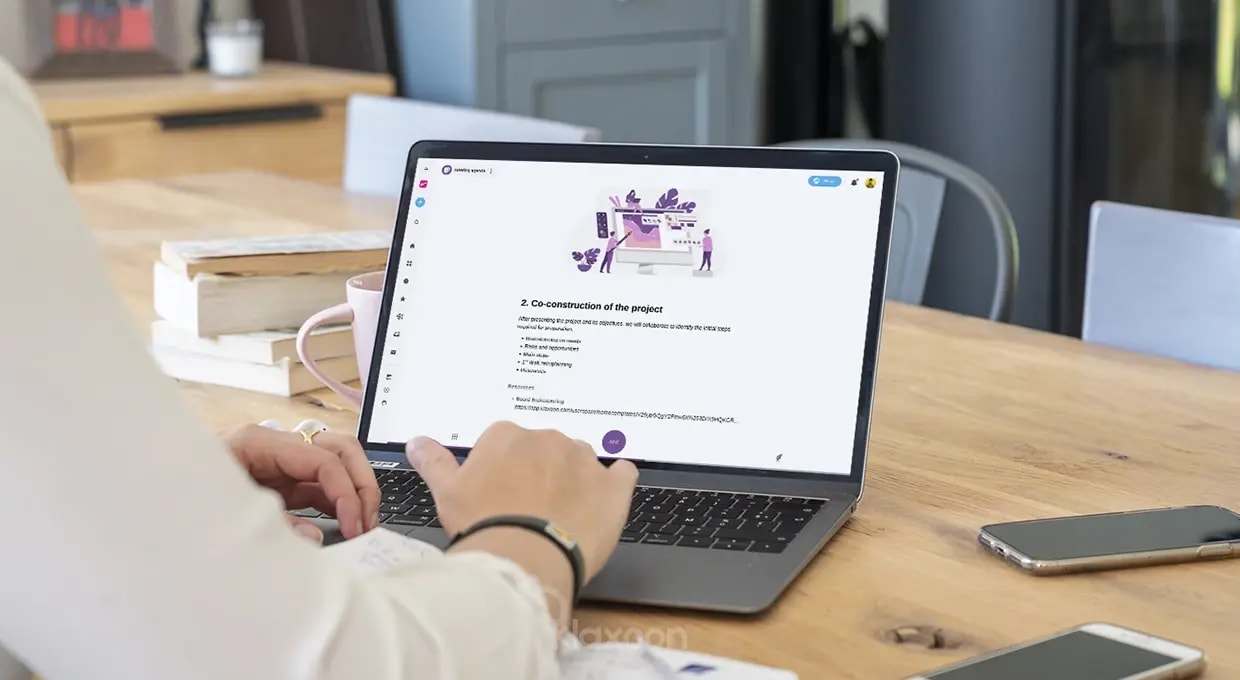Meeting agenda: Improve the preparation and structure of your meetings
Published on March 6, 2025
Meeting agenda: Improve the preparation and structure of your meetings


Meetings are a staple of the modern workplace, providing a space for collaboration, communication, and decision-making. However, unstructured and poorly planned meetings can lead to wasted time and lackluster results.
This ready-to-use Meeting Agenda template offers a solution to these challenges by providing a clear framework for organizing and conducting meetings effectively. In this article, we’ll explore why preparing a meeting agenda is more important than ever, and how you can implement it using Klaxoon’s collaborative platform.
In the context of an increasing prevalence of hybrid work and cross-functional teams, ensuring that everyone is on the same page, wherever they are working from. Therefore, in your meetings, the discussions need to stay on track to ensure both engagement and efficiency.
Therefore, a well-defined agenda sets the tone for the meeting, clarifying its purpose and what needs to be accomplished. It helps participants prepare beforehand, ensuring that they come to the table ready to contribute meaningfully.
Additionally, in an era where time is so precious, a structured agenda helps to make the most out of every minute by guiding the flow of conversation and minimizing off-topic discussions.


For a structured meeting, using a comprehensive agenda template can save a lot of time.
This Meeting Agenda template helps you keep discussions focused, ensures all relevant points are covered, and maximizes productivity by providing a clear roadmap for your meeting.
Key components of this Memo template include:
Given these elements, here is why the Meeting Agenda template is an essential tool for successful meetings:
Klaxoon offers a visual collaborative platform that simplifies creating and managing your meeting agendas. By leveraging Klaxoon’s Meeting Agenda template, you can streamline your meetings and enhance productivity. Here is how to get started:
During the meeting, feel free to use other Klaxoon’s interactive tools such as Surveys, Quizzes, and feedback Questions to engage participants and facilitate collaboration. This dynamic approach keeps everyone involved and invested in the meeting's outcomes.
Finally, at the end of the meeting, summarize the key takeaways, decisions, and action items. Assign tasks to specific individuals and set deadlines for follow-up. You can also use our dedicated Memo template to make it easy to create your meeting minutes.
Get inspired by other templates from the same categories
Unlock your teamwork potential